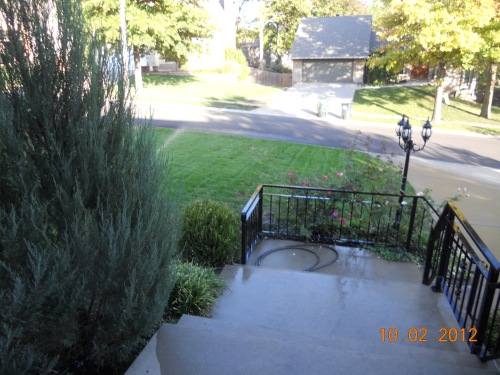![images[2] (2)](https://carolekatsantoness.files.wordpress.com/2013/05/images2-2.jpg?w=500) Totally out of control last fall, I cut the clematis, in my garden, back nearly ground level. They must have been nearly five feet tall and the new growth somewhat hid the dead beneath. Major pruning took place before the first frost.
Totally out of control last fall, I cut the clematis, in my garden, back nearly ground level. They must have been nearly five feet tall and the new growth somewhat hid the dead beneath. Major pruning took place before the first frost.
I wondered if the plants would recover. I thought my vines might return to a sleep…first year sleep…second year creep and third year leap…you know what I mean. Instead they skipped over the first two stages of growth and took more than a giant leap. All three vines returned with a flourish and have made such a showing this spring.
Hundreds of years ago, Clematis flourished in Europe and was often referred to as Travelers Joy. Since the early 1800s it has been cultivated in the United States and has made a special statement in many gardens.
I sit in the warmth of the family room near a blaze in the fireplace and stare out the window at an unseasonably cold winter day in May. It hasn’t snowed in May during my lifetime. News broadcasts tells me the last time was 1907 and I laughingly tell my family, “none of us saw that snow except Dad, he was twelve.”
At that age he probably enjoyed it. On the other hand, I’m not particularly happy to see the Christmas scene outdoors but, I must admit, it is pretty.
It must be wishful thinking or my imagination has run wild. I walk to the window in need of a closer look; my eyes are playing tricks, no doubt.
Snowflakes have gathered on the vines larger than white clematis rosettes. They are spaced similar to the blossoms I gaze at and gather all summer. They seem to insist snowfall in May is tolerable.
There, indeed, perfectly situated on the vine are six or eight clusters of flakes pretending to be blossoms.
I often talk to plants but today they speak to me. Could it be nature wanted to send a message? Like the frozen rosettes hanging on the vines they seem to say, “hang in there because spring is not far off.”





![downy_woodpecker_1[1]](https://carolekatsantoness.files.wordpress.com/2013/03/downy_woodpecker_11.jpg?w=500)
![downy_woodpecker_2[1]](https://carolekatsantoness.files.wordpress.com/2013/03/downy_woodpecker_21.jpg?w=500)
![images[3]](https://carolekatsantoness.files.wordpress.com/2013/03/images3.jpg?w=500)


![241695788_dBtsC-Ti[1]](https://carolekatsantoness.files.wordpress.com/2012/12/241695788_dbtsc-ti1.jpg?w=500)